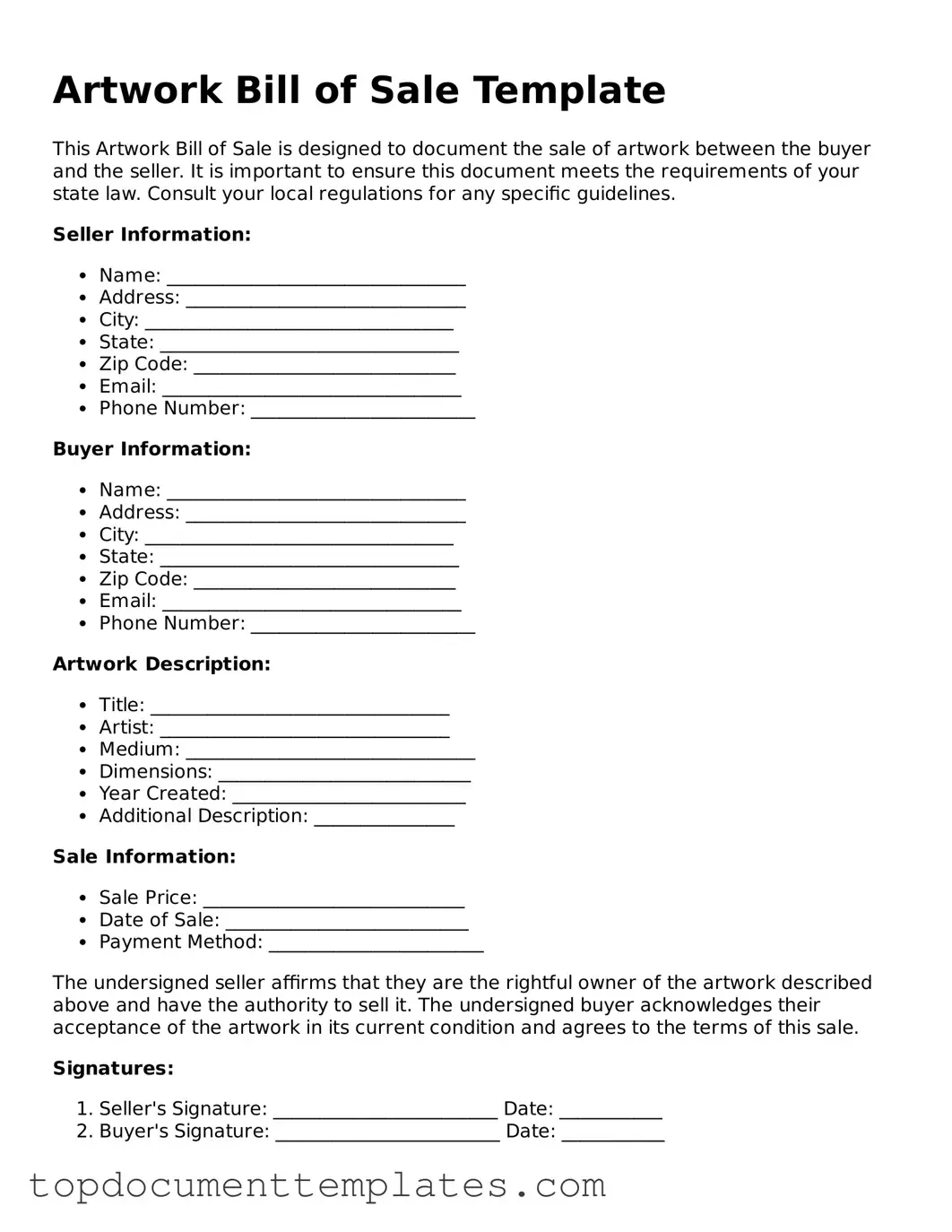The Artwork Bill of Sale form serves as a crucial document in the realm of art transactions, providing both buyers and sellers with a clear record of the sale. This form typically outlines essential details such as the description of the artwork, including its title, medium, and dimensions, ensuring that both parties are on the same page regarding the item being sold. It also includes the names and contact information of the buyer and seller, which helps establish a legal connection between the two parties. Furthermore, the form often specifies the sale price and payment terms, clarifying the financial aspects of the transaction. In addition, it may include clauses regarding the transfer of ownership and any warranties or representations made by the seller about the artwork’s authenticity. By documenting these key elements, the Artwork Bill of Sale not only protects the interests of both parties but also serves as a valuable reference for future transactions or disputes. Understanding the importance of this form can help individuals navigate the often complex world of art sales with greater confidence and clarity.
